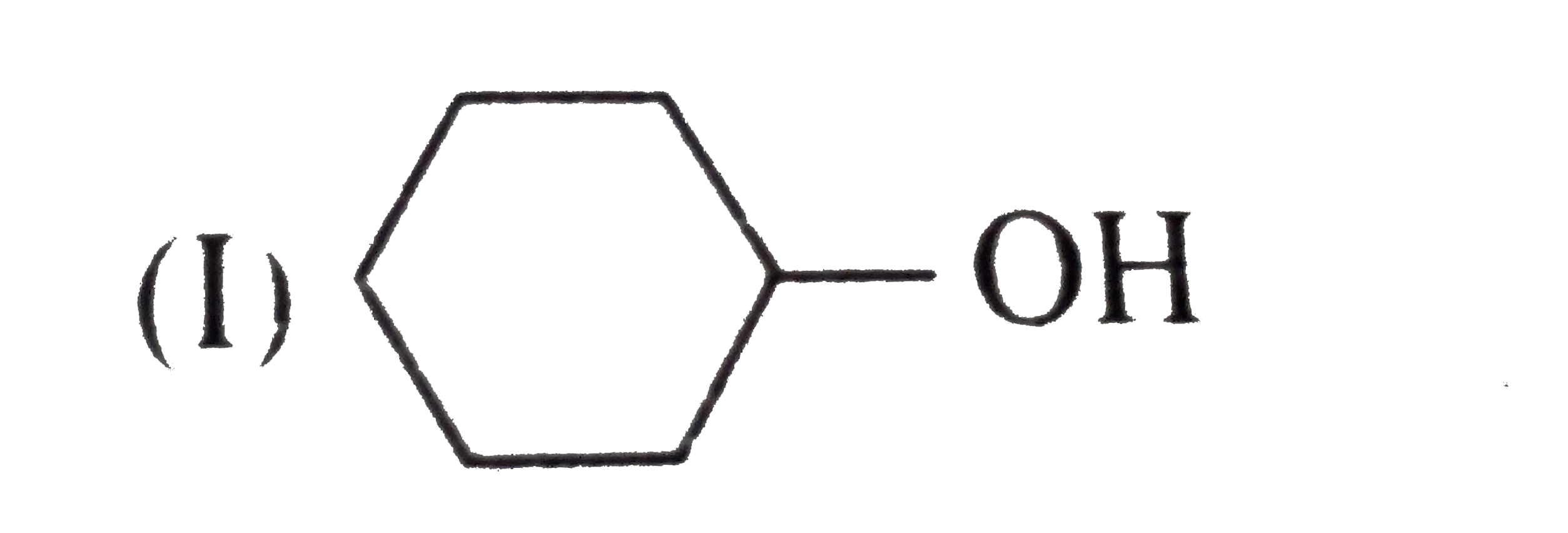The correct order of bond order values among the following
(i) NO− (ii) NO+
(iii) NO (iv) NO2+
(v) NO2−
I lt IV lt III lt II lt V
IV = II lt I lt V lt III
V lt I lt III lt IV = II
II lt III lt IV lt I lt V
The correct Answer is:C
To determine the correct order of bond order values among the given species (i) NO−, (ii) NO+, (iii) NO, (iv) NO2+, and (v) NO2−, we will calculate the bond order for each species using the formula:
Bond Order=12×(Number of bonding electrons−Number of antibonding electrons)
Step 1: Calculate Bond Order for NO−
1. Determine the number of electrons:
- NO has 11 electrons. The negative charge adds 1 more electron, so NO− has 12 electrons.
2. Molecular orbital configuration:
- The configuration is:
- σ1s², σ*1s², σ2s², σ*2s², π2p_x², π2p_y²
3. Count bonding and antibonding electrons:
- Bonding electrons = 2 (σ1s) + 2 (σ2s) + 4 (π2p) = 8
- Antibonding electrons = 2 (σ*1s) + 2 (σ*2s) = 4
4. Calculate bond order:
\(
\text{Bond Order} = \frac{1}{2} \times (8 - 4) = \frac{1}{2} \times 4 = 2
\)
Step 2: Calculate Bond Order for NO+
1. Determine the number of electrons:
- NO has 11 electrons. The positive charge removes 1 electron, so NO+ has 10 electrons.
2. Molecular orbital configuration:
- The configuration is:
- σ1s², σ*1s², σ2s², σ*2s², π2p_x¹, π2p_y¹
3. Count bonding and antibonding electrons:
- Bonding electrons = 2 (σ1s) + 2 (σ2s) + 2 (π2p) = 6
- Antibonding electrons = 2 (σ*1s) + 2 (σ*2s) = 4
4. Calculate bond order:
\(
\text{Bond Order} = \frac{1}{2} \times (6 - 4) = \frac{1}{2} \times 2 = 1
\)
Step 3: Calculate Bond Order for NO
1. Determine the number of electrons:
- NO has 11 electrons.
2. Molecular orbital configuration:
- The configuration is:
- σ1s², σ*1s², σ2s², σ*2s², π2p_x², π2p_y¹
3. Count bonding and antibonding electrons:
- Bonding electrons = 2 (σ1s) + 2 (σ2s) + 4 (π2p) = 8
- Antibonding electrons = 2 (σ*1s) + 2 (σ*2s) = 4
4. Calculate bond order:
\(
\text{Bond Order} = \frac{1}{2} \times (8 - 4) = \frac{1}{2} \times 4 = 2
\)
Step 4: Calculate Bond Order for NO2+
1. Determine the number of electrons:
- NO has 11 electrons. The positive charge removes 2 electrons, so NO2+ has 9 electrons.
2. Molecular orbital configuration:
- The configuration is:
- σ1s², σ*1s², σ2s², σ*2s², π2p_x¹
3. Count bonding and antibonding electrons:
- Bonding electrons = 2 (σ1s) + 2 (σ2s) + 2 (π2p) = 6
- Antibonding electrons = 2 (σ*1s) + 2 (σ*2s) = 4
4. Calculate bond order:
\(
\text{Bond Order} = \frac{1}{2} \times (6 - 4) = \frac{1}{2} \times 2 = 1
\)
Step 5: Calculate Bond Order for NO2−
1. Determine the number of electrons:
- NO has 11 electrons. The negative charge adds 2 electrons, so NO2− has 13 electrons.
2. Molecular orbital configuration:
- The configuration is:
- σ1s², σ*1s², σ2s², σ*2s², π2p_x², π2p_y², σ2p_z¹
3. Count bonding and antibonding electrons:
- Bonding electrons = 2 (σ1s) + 2 (σ2s) + 4 (π2p) + 2 (σ2p) = 10
- Antibonding electrons = 2 (σ*1s) + 2 (σ*2s) = 4
4. Calculate bond order:
\(
\text{Bond Order} = \frac{1}{2} \times (10 - 4) = \frac{1}{2} \times 6 = 3
\)
Summary of Bond Orders
- NO− = 2
- NO+ = 1
- NO = 2
- NO2+ = 1
- NO2− = 3
Final Order of Bond Orders
From highest to lowest:
1. NO2− (3)
2. NO− (2)
3. NO (2)
4. NO+ (1)
5. NO2+ (1)
- NO has 11 electrons. The negative charge adds 1 more electron, so NO− has 12 electrons.
2. Molecular orbital configuration:
- The configuration is:
- σ1s², σ*1s², σ2s², σ*2s², π2p_x², π2p_y²
3. Count bonding and antibonding electrons:
- Bonding electrons = 2 (σ1s) + 2 (σ2s) + 4 (π2p) = 8
- Antibonding electrons = 2 (σ*1s) + 2 (σ*2s) = 4
\(
\text{Bond Order} = \frac{1}{2} \times (8 - 4) = \frac{1}{2} \times 4 = 2
\)
- NO has 11 electrons. The positive charge removes 1 electron, so NO+ has 10 electrons.
2. Molecular orbital configuration:
- The configuration is:
- σ1s², σ*1s², σ2s², σ*2s², π2p_x¹, π2p_y¹
3. Count bonding and antibonding electrons:
- Bonding electrons = 2 (σ1s) + 2 (σ2s) + 2 (π2p) = 6
- Antibonding electrons = 2 (σ*1s) + 2 (σ*2s) = 4
\(
\text{Bond Order} = \frac{1}{2} \times (6 - 4) = \frac{1}{2} \times 2 = 1
\)
- NO has 11 electrons.
2. Molecular orbital configuration:
- The configuration is:
- σ1s², σ*1s², σ2s², σ*2s², π2p_x², π2p_y¹
3. Count bonding and antibonding electrons:
- Bonding electrons = 2 (σ1s) + 2 (σ2s) + 4 (π2p) = 8
- Antibonding electrons = 2 (σ*1s) + 2 (σ*2s) = 4
\(
\text{Bond Order} = \frac{1}{2} \times (8 - 4) = \frac{1}{2} \times 4 = 2
\)
- NO has 11 electrons. The positive charge removes 2 electrons, so NO2+ has 9 electrons.
2. Molecular orbital configuration:
- The configuration is:
- σ1s², σ*1s², σ2s², σ*2s², π2p_x¹
3. Count bonding and antibonding electrons:
- Bonding electrons = 2 (σ1s) + 2 (σ2s) + 2 (π2p) = 6
- Antibonding electrons = 2 (σ*1s) + 2 (σ*2s) = 4
\(
\text{Bond Order} = \frac{1}{2} \times (6 - 4) = \frac{1}{2} \times 2 = 1
\)
- NO has 11 electrons. The negative charge adds 2 electrons, so NO2− has 13 electrons.
2. Molecular orbital configuration:
- The configuration is:
- σ1s², σ*1s², σ2s², σ*2s², π2p_x², π2p_y², σ2p_z¹
3. Count bonding and antibonding electrons:
- Bonding electrons = 2 (σ1s) + 2 (σ2s) + 4 (π2p) + 2 (σ2p) = 10
- Antibonding electrons = 2 (σ*1s) + 2 (σ*2s) = 4
\(
\text{Bond Order} = \frac{1}{2} \times (10 - 4) = \frac{1}{2} \times 6 = 3
\)
- NO− = 2
- NO+ = 1
- NO = 2
- NO2+ = 1
- NO2− = 3
From highest to lowest:
1. NO2− (3)
2. NO− (2)
3. NO (2)
4. NO+ (1)
5. NO2+ (1)
Topper's Solved these Questions
- CHEMICAL BONDING-I & IIBOOK - VMC MODULES ENGLISHCHAPTER - CHEMICAL BONDING-I & IIEXERCISE - JEE Main (Numerical Value Questions)
15 Videos
- CHEMICAL BONDING-I & IIBOOK - VMC MODULES ENGLISHCHAPTER - CHEMICAL BONDING-I & IIEXERCISE - JEE Main (Archive)
62 Videos
- CHEMICAL BONDING-I & IIBOOK - VMC MODULES ENGLISHCHAPTER - CHEMICAL BONDING-I & IIEXERCISE - Level - 1 (JEE Main)
75 Videos
- CHEMICAL BONDING & MOLECULAR STRUCTURE BOOK - VMC MODULES ENGLISHCHAPTER - CHEMICAL BONDING & MOLECULAR STRUCTURE EXERCISE - IN-CHAPTER EXERCISE-L
9 Videos
- CHEMICAL EQUILIBRIUMBOOK - VMC MODULES ENGLISHCHAPTER - CHEMICAL EQUILIBRIUMEXERCISE - IN-CHAPTER EXERCISE - G
10 Videos
Similar Questions
Knowledge Check
The correct order of decreasing C−O bond length of (1) CO,(II)CO2−3(III)CO2 is .
ACO>CO2>CO2−3BCO2−3>CO2>COCCO2>CO>CO2−3DCO2>CO2−3>CO
The decreasing order of acidic character of the following is:
(I) (II)
(II) 
(III) (IV)
(IV) 
View SolutionThe decreasing order of−I effect of the following is :
(I) CHO
(II) F
(III) OR
(IV) NH2
(V) OH
(VI) Ph.
View SolutionThe decreasing order of −I effect of the following is :
(I) R3N⊕
(II) NO2
(III) CN
(IV) SO3H
(V) COOH.
View SolutionThe decreasing order of the basic character of the following is :
(I) FӨ
(II) NOӨ3
(III) H2O
(IV) CH3OH.
View SolutionThe correct order of nucleophilicity among the following is:
(I)CH3−C∣∣O−O−
(II) CH3O−
(III) CN−
(iv)
View SolutionThe correct order of equatorial FSF bond angle in the folllowing compound.
(I)SF4 (II) OSF4 (III) H2CSF4
View SolutionThe correct order of equatorial FSF bond angle in the folllowing compound.
(I)SF4 (II) OSF4 (III) H2CSF4
View Solution
